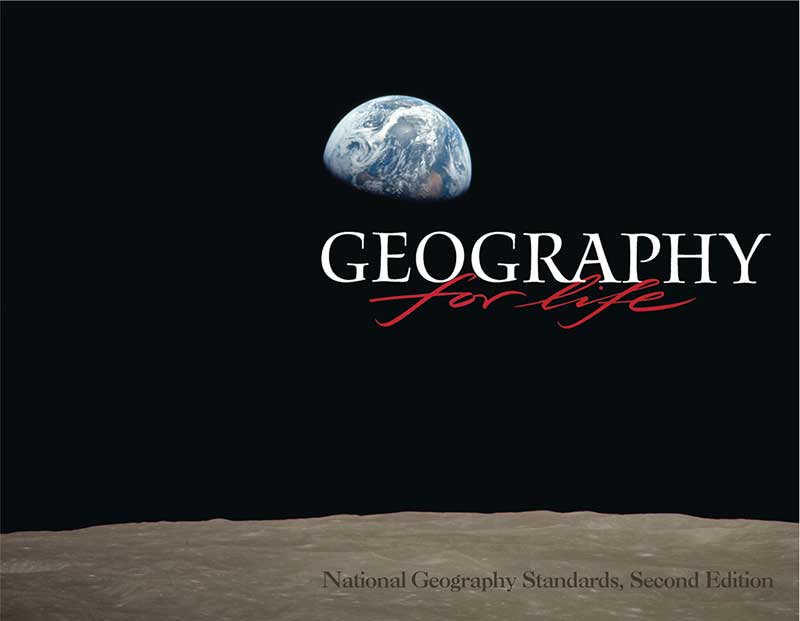“Geography is for life in every sense of that expression: Lifelong, life-sustaining, and life-enhancing.”
The National Geography Standards represent the consensus of the geography education community around what students should know and be able to do by the time they graduate from the 12th grade.
The first ever National Geography Standards, “Geography for Life”, were published in 1994 and revised in 2012. While every state has adopted geography curriculum standards based on “Geography for Life”, most students in the United States will not have had enough explicit geography instruction to meet all of these standards unless or until they enroll in an undergraduate program. Curriculum developers, K-12 teachers, and parents can help by increasing their own understanding of the value and power of a geographic education.
The 18 geographic knowledge standards are grouped by 6 Essential Elements:
- The World in Spatial Terms
- Places and Regions
- Physical Systems
- Human Systems
- Environment and Society
- The Uses of Geography
The second edition further delineates knowledge statements and performance statements for three grade bands:
- (up to and including) 4th grade
- (up to and including) 8th grade
- (up to and including) 12th grade
THE EIGHTEEN NATIONAL STANDARDS (and Six Essential Elements)
The geographically informed person knows and understands…
Essential Element I. THE WORLD IN SPATIAL TERMS
Standard 1
How to use maps and other geographic representations, tools, and technologies to acquire, process, and report information from a spatial perspective.
Standard 2
How to use mental maps to organize information about people, places, and environments in a spatial context.
Standard 3
How to analyze the spatial organization of people, places, and environments on Earth’s surface.
Essential Element II. PLACES AND REGIONS
Standard 4
The physical and human characteristics of places.
Standard 5
That people create regions to interpret Earth’s complexity.
Standard 6
How culture and experience influence people’s perceptions of places and regions.
Essential Element III. PHYSICAL SYSTEMS
Standard 7
The physical processes that shape the patterns of Earth’s surface.
Standard 8
The characteristics and spatial distribution of ecosystems on Earth’s surface.
Essential Element IV. HUMAN SYSTEMS
Standard 9
The characteristics, distribution, and migration of human populations on Earth’s surface.
Standard 10
The characteristics, distribution, and complexity of Earth’s cultural mosaics.
Standard 11
The patterns and networks of economic interdependence on Earth’s surface.
Standard 12
The processes, patterns, and functions of human settlement.
Standard 13
How the forces of cooperation and conflict among people influence the division and control of Earth’s surface.
Standard 14
How human actions modify the physical environment.
Essential Element V. ENVIRONMENT AND SOCIETY
Standard 15
How physical systems affect human systems
Standard 16
The changes that occur in the meaning, use, distribution, and importance of resources.
Essential Element VI. THE USES OF GEOGRAPHY
Standard 17
How to apply geography to interpret the past.
Standard 18
How to apply geography to interpret the present and plan for the future.


